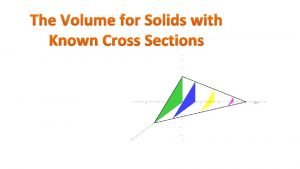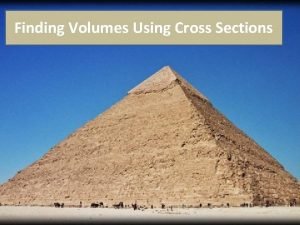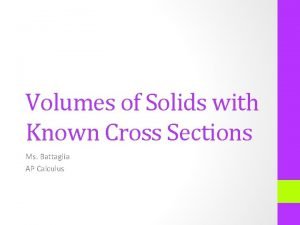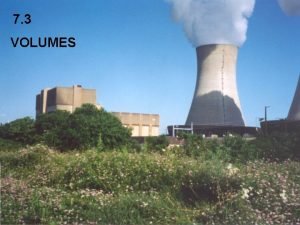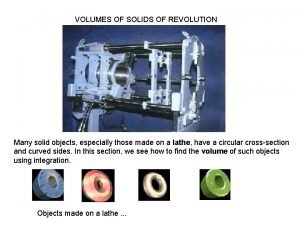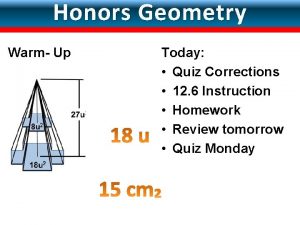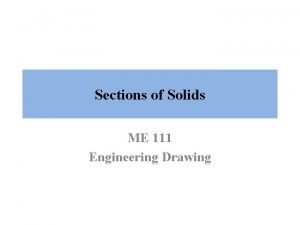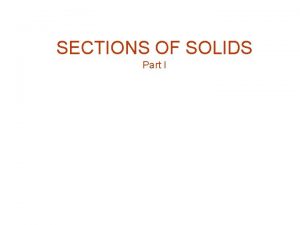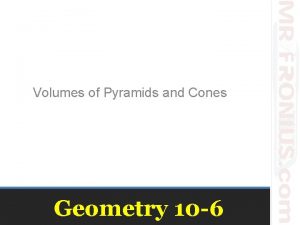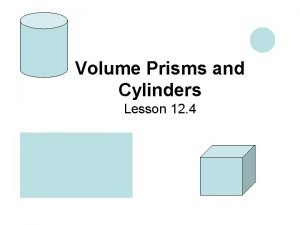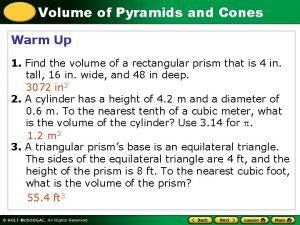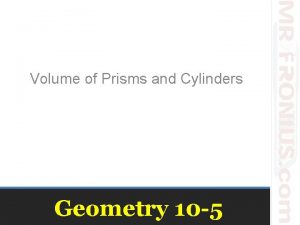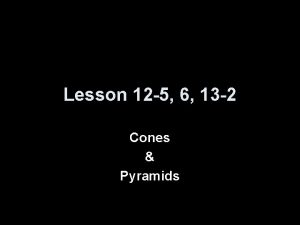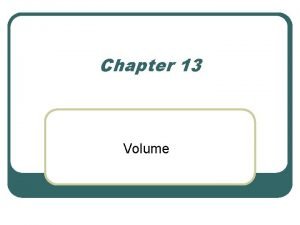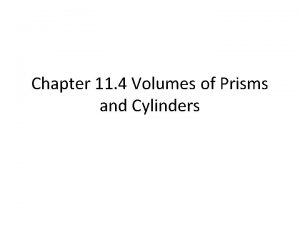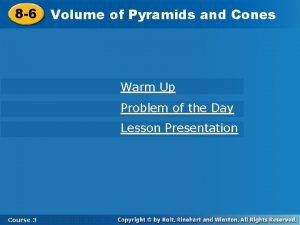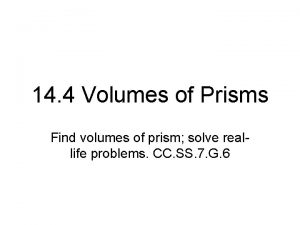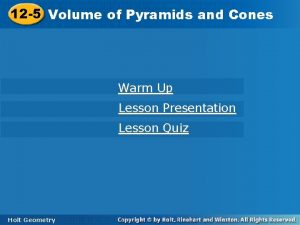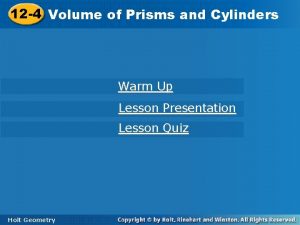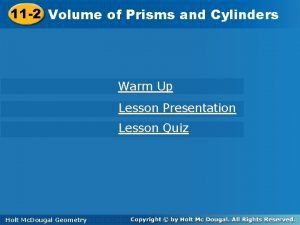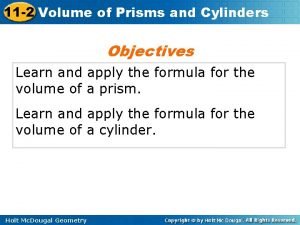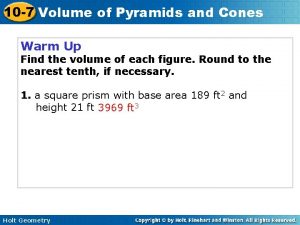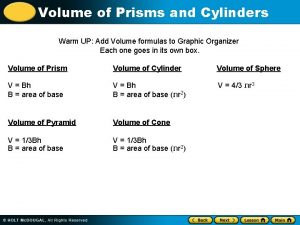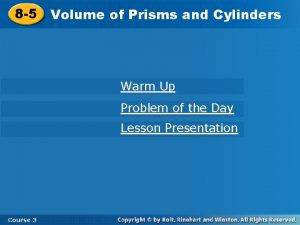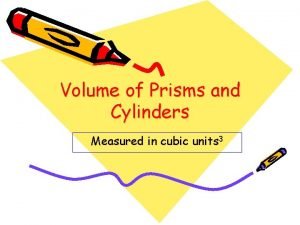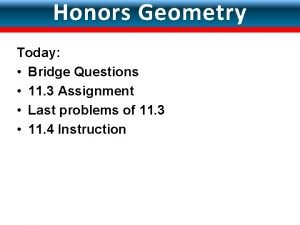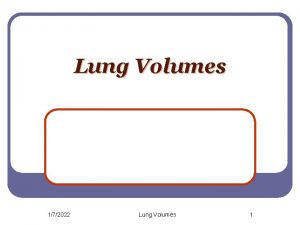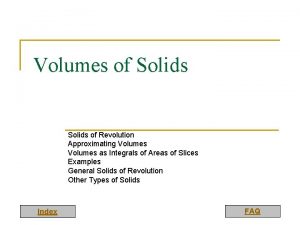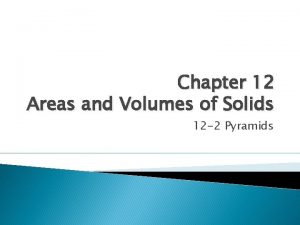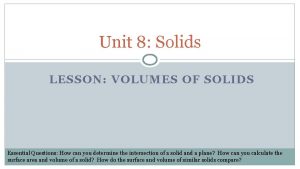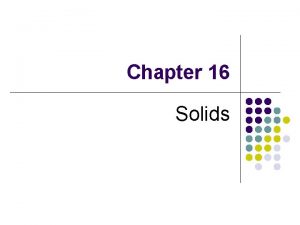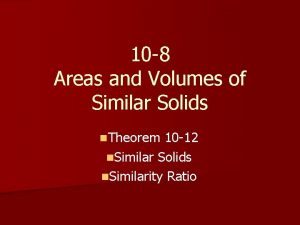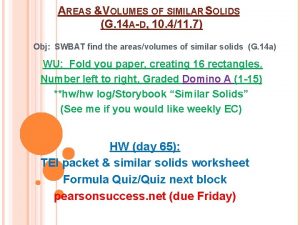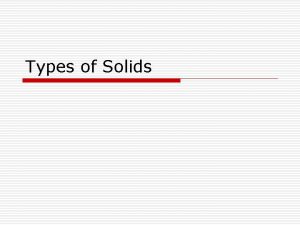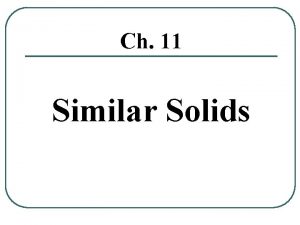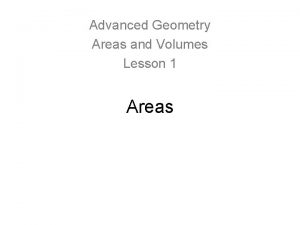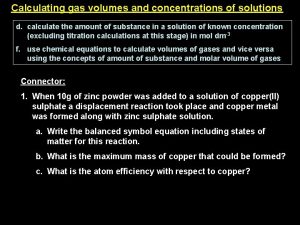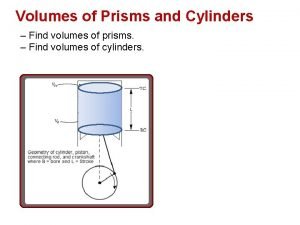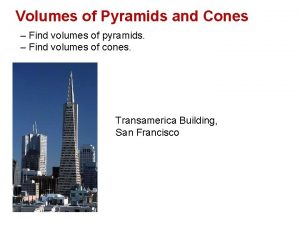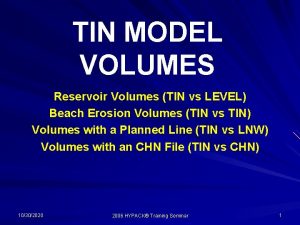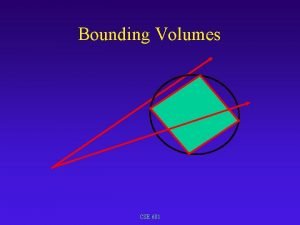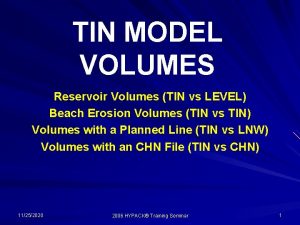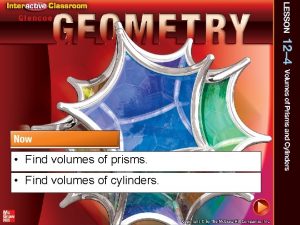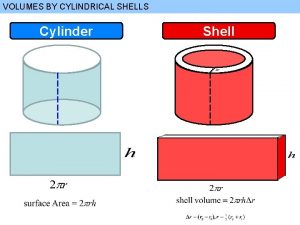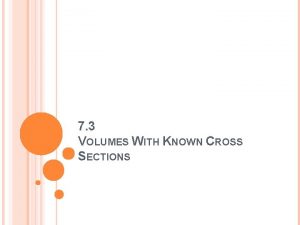Areas and Volumes of Solids Chapter 12 Section







































- Slides: 39

Areas and Volumes of Solids Chapter 12

Section 12 -1 Prisms

POLYHEDRON is a three-dimensional figure in which each surface is a polygon and

The surfaces are called faces. Two faces intersect at an edge, and a vertex is a point where three or more edges intersect.

PRISM Is a polyhedron with two identical parallel faces. Each of these faces is called a base and

a prism is named by the shape of its bases.

ALTITUDE • A segment joining the two base planes and perpendicular to both • The length of the altitude is the height of the prism

LATERAL FACES faces that are not bases

RIGHT PRISM A prism having rectangular lateral faces.

OBLIQUE PRISM A prism having nonrectangular lateral faces.

THEOREM 12 -1 The lateral area of a right prism equals the perimeter of a base times the height of the prism LA = ph

SURFACE AREA OF A PRISM Surface Area equals the sum of the areas of all its faces SA = LA +2 B * Also called Total Area

THEOREM 12 -2 The volume of a right prism equals the area of a base times the height of the prism. V = Bh

Section 12 -2 Pyramids

PYRAMID Is a polyhedron with only one base. The other faces are triangles that meet at a vertex and

a pyramid is named by the shape of its base.

ALTITUDE Is a segment from the vertex perpendicular to the base.

LATERAL FACES are the triangular faces.

LATERAL EDGES The segments where the lateral faces intersect.

REGULAR PYRAMID n. Base is a regular polygon n. All lateral edges are congruent n. All lateral faces are congruent isosceles triangles n. The height is called the slant height n. The altitude meets the base at its center

METHODS FOR FINDING LATERAL AREA OF A REGULAR PYRAMID 1. Find the area of one lateral face and multiply by n where n is the number of lateral faces 2. Use the formula LA = ½pl where l is the slant height

THEOREM 12 -4 The volume of a pyramid equals 1/3 the area of the base times the height of pyramid. V = 1/3 Bh

Section 12 -3 Cylinders and Cones

CYLINDER a three-dimensional figure having a curved region with two parallel congruent circular bases. Its axis joins the centers of the two bases.

RIGHT CYLINDER Is a cylinder where the segment joining the center of the circular bases is an altitude

ALTITUDE Is the height of the cylinder

THEOREM 12 -5 The lateral area of a cylinder equals the circumference of a base times the height of the cylinder. LA = 2 rh

THEOREM 12 -6 The volume of a cylinder equals the area of a base times the height of the cylinder. 2 V = r h

CONE a three-dimensional figure having a curved surface and one circular base. Its axis is a segment from the vertex to the center of the base.

THEOREM 12 -7 The lateral area of a cone equals half the circumference of the base times the slant height LA = rl

THEOREM 12 -8 The volume of a cone equals one third the area of the base times the height of the cone. 2 V = 1/3 r h

Section 12 -4 Spheres

SPHERE is the set of points in space that are the same distance from a given point called the center

THEOREM 12 -9 The area of a sphere equals 4 times the square of the radius 2 A = 4 r

THEOREM 12 -10 The volume of a sphere equals 4/3 times the cube of the radius 3 V = 4/3 r

Section 12 -5 Areas and Volumes of Similar Solids

SIMILAR SOLIDS Solids having the same shape but not necessarily the same size

THEOREM 12 -11 If the scale factor of two similar solids is a: b, then 1. The ratio of corresponding perimeters is a: b 2. The ratio of the base areas, of the lateral areas, 2 2 and of the total areas is a : b 3. The ratio of the volume is

END
 12-5 areas and volumes of similar solids
12-5 areas and volumes of similar solids Cross section volume
Cross section volume Volumes using cross sections
Volumes using cross sections Solids with known cross sections
Solids with known cross sections Solids with known cross sections
Solids with known cross sections Volumes of solids
Volumes of solids Unit 6 lesson 6 surface areas and volumes of spheres
Unit 6 lesson 6 surface areas and volumes of spheres Buoyancyability
Buoyancyability Sectional plane are represented by
Sectional plane are represented by Solid
Solid Section of solids
Section of solids Chapter 14 solids liquids and gases worksheet answers
Chapter 14 solids liquids and gases worksheet answers Kinetic molecular theory of solid
Kinetic molecular theory of solid Chapter 11 - states of matter: liquids and solids
Chapter 11 - states of matter: liquids and solids Practice 10 6 volumes of pyramids and cones answers
Practice 10 6 volumes of pyramids and cones answers Lesson 12-4 volumes of prisms and cylinders
Lesson 12-4 volumes of prisms and cylinders Volume of pyramids worksheet answer key
Volume of pyramids worksheet answer key Geometry
Geometry Pediatric medication administration guidelines
Pediatric medication administration guidelines Lesson 12-5 volumes of pyramids and cones
Lesson 12-5 volumes of pyramids and cones Lesson 13-2 volume of cones answers
Lesson 13-2 volume of cones answers 11-4 volumes of prisms and cylinders
11-4 volumes of prisms and cylinders Im injection sites and volumes pediatrics
Im injection sites and volumes pediatrics Volume of pyramid and cone
Volume of pyramid and cone Volume of a trapezium
Volume of a trapezium 12-5 volumes of pyramids and cones
12-5 volumes of pyramids and cones 12-4 volumes of prisms and cylinders answers
12-4 volumes of prisms and cylinders answers 11-3 volumes of pyramids and cones
11-3 volumes of pyramids and cones Volume of prisms and cylinders worksheet answers 11-2
Volume of prisms and cylinders worksheet answers 11-2 11-2 volumes of prisms and cylinders
11-2 volumes of prisms and cylinders Volumes of pyramids and cones quiz
Volumes of pyramids and cones quiz Reacting masses and volumes
Reacting masses and volumes Volume of prisms and cylinders formula
Volume of prisms and cylinders formula Contoh volume atur
Contoh volume atur Volume of cylinder prism
Volume of cylinder prism 12-4 volumes of prisms and cylinders answers
12-4 volumes of prisms and cylinders answers Volume of prisms and cylinders
Volume of prisms and cylinders Pulmonary volumes and capacities
Pulmonary volumes and capacities 11-4 area of regular polygons
11-4 area of regular polygons Chapter 10 section 1: meiosis
Chapter 10 section 1: meiosis

